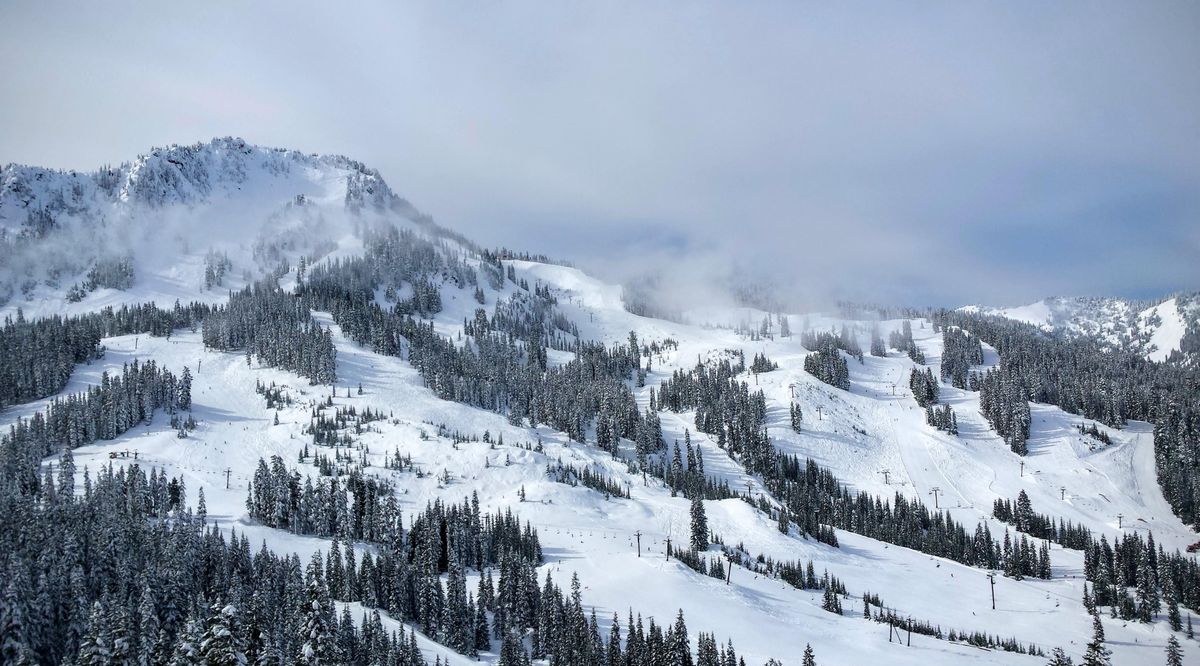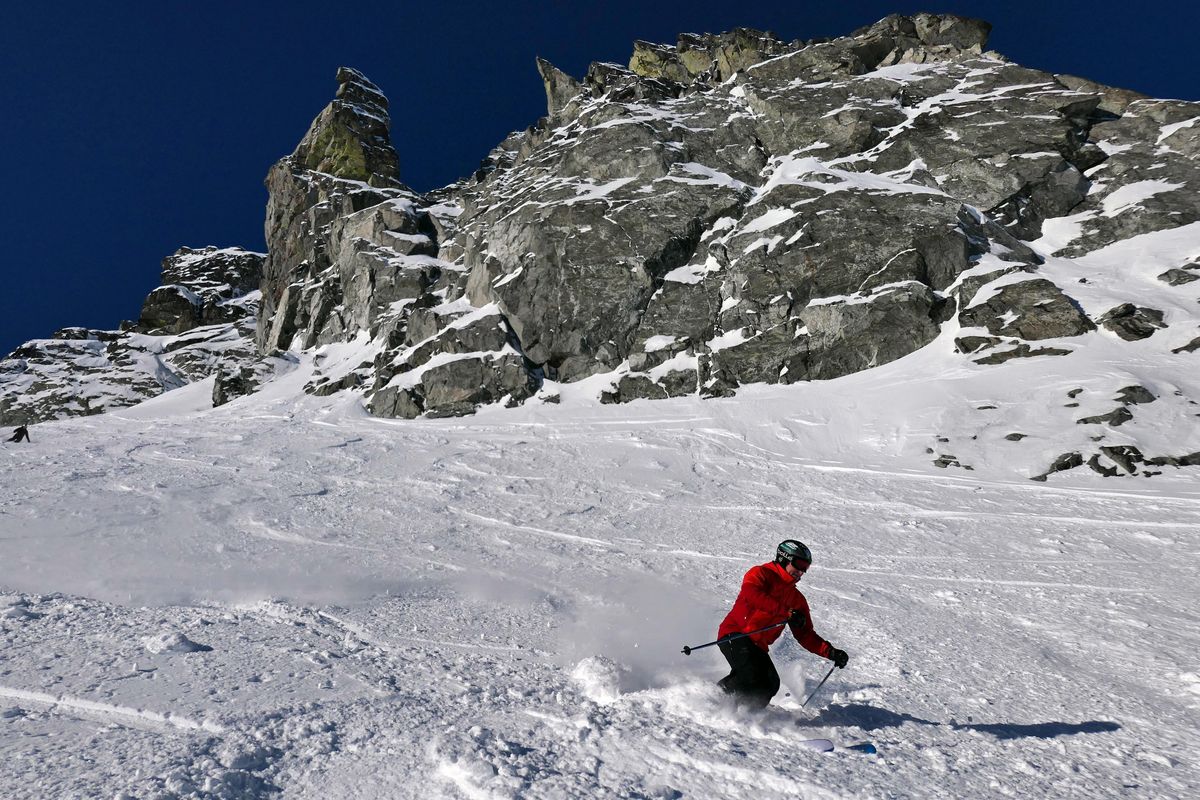Stevens, Whistler resorts transformed under new ownership

If you’re a longtime skier in the Pacific Northwest, chances are you’ve shredded the slopes of Stevens Pass or Whistler Blackcomb at some point.
These classic resorts are now tied together more than ever before, thanks to Vail Corp., the ski industry giant.
Vail bought Whistler Blackcomb in 2016 and Stevens Pass in 2018, and the corporation’s ownership is having a marked impact this year.
New lifts have transformed both mountains. At Whistler, the new Blackcomb Gondola whisks skiers from the base area to midmountain. At Stevens Pass, the new quad chairlifts, Daisy and Brooks, have greatly improved access to beginning and intermediate terrain, and a remodel at Granite Peaks Lodge has streamlined food service.
Vail’s deep pockets paid for these projects, and for skiers, the on-mountain experience has definitely improved.
In 2018 when Vail bought Stevens Pass, more than a few skiers were wondering why a major player would want to buy a small commuter resort in the Washington’s Cascades.
Now the move makes perfect sense: Get the skiers in the Seattle metro area to buy Vail’s Epic Pass, which offers access to both Stevens and Whistler Blackcomb.
The strategy is working.
“It’s very common to talk with people on the chairlift here who have been to Whistler this year,” said Tom Pettigrew, general manager of Stevens Pass.
And skiers at Stevens also are using the Epic Pass to sample other Vail Corp. resorts in Utah, Colorado and the Lake Tahoe area of California, Pettigrew said.
Even though Whistler and Stevens are different in size, “they share the same DNA,” said Marc Riddell, Vail’s director of communications for the West Coast. “We think it’s the perfect complement.”
While Whistler Blackcomb is consistently ranked among the top destination resorts in the world, Stevens Pass is much smaller, but also offers excellent terrain and a history that dates back to the 1930s, Riddell said.
“Stevens is an American icon,” he said. “I would argue that if you’re a historian of the American ski industry, it’s one of the places you have to visit.”
A skier shreds powder on Blackcomb Glacier at Whistler. (John Nelson / The Spokesman-Review)Buy a print of this photo
If you decide to check out Stevens Pass or Whistler Blackcomb this year, you may be in for some sticker shock at the ticket window. Day-of pass rates at Whistler are as high as $161 CAD and $111 USD at Stevens Pass during peak periods.
Those prices are certainly high, but that’s part of Vail’s philosophy: Get skiers to commit to tickets through advanced sales at much lower prices, Riddell said.
“The way we look at it is it’s kind of like an airline. You’re going to get the best possible price if you buy your ticket in advance,” he said.
Visiting Stevens
For Spokane residents, visiting Stevens Pass requires a four-hour drive on U.S. 2, so Pettigrew recommends making the trip over a long weekend and staying in Leavenworth, about 35 miles away.
Once you’re there, check out the largely intermediate terrain on the mountain’s front side, cruising groomers on the Skyline, Hogsback and Brooks chairlifts. The back side, known as Mill Valley, also offers a number of intermediate runs.
Most of Stevens’ advanced terrain falls off its two peaks — Cowboy Mountain, served by the 7th Heaven chairlift — and Big Chief Mountain, served by the Double Diamond/Southern Cross chairlift.
Some of these drops are among the steepest you’ll find anywhere.
“I would argue that 7th Heaven at Stevens is some of the best ridgeline skiing in North America,” Riddell said.
One of Stevens’ other appeals is its night skiing, operating Wednesday through Sunday. Much of the resort’s front-side chairlifts remain open until 10 p.m., and Pettigrew calls night skiing tickets “a great value.”
“Some of my best ski days have been at night,” he said.
If you visit, avoid Saturday mornings, the busiest time of the week. Stevens’ parking lots are known to fill up early on Saturdays in particular, but if you arrive later in the day — say for a night-skiing session — you won’t have any problems, Pettigrew said.
“How do we get more people to spread out their arrival — that’s one of the things that we’re working on,” he said.
Visiting Whistler
It’s about a nine-hour drive from Spokane to Whistler, crossing the international border in Blaine. You can also fly into Vancouver, British Columbia, and rent a car or take public transportation.
Whistler Blackcomb is one of the largest resorts in the world, offering more than 8,000 skiable acres. The best skiing is in the alpine zone above midmountain on the Whistler and Blackcomb sides of the resort. The Peak 2 Peak tram ties the two mountains together.
If you’re lucky, you’ll have a sunny day, where you can explore the alpine zones of each mountain amid the jaw-dropping beauty of these wild coastal peaks.
On Blackcomb, the Glacier Express and Showcase T-Bar lead to some fantastic advanced skiing and offer access to the massive Blackcomb Glacier. The 7th Heaven Express serves a vast bowl of intermediate terrain and some of the resort’s steepest drops, including the harrowing Saudan Couloir.
The Whistler alpine zone offers the Harmony and Symphony lifts, featuring mostly intermediate terrain, and the downright scary Peak Express, which serves mostly steeps.
“Whistler is kind of the New York of the ski industry — it’s intense,” Riddell said. “This is big-mountain skiing.”
To help orient yourself at this vast and sometimes-confusing resort, consider taking a mountain tour.





